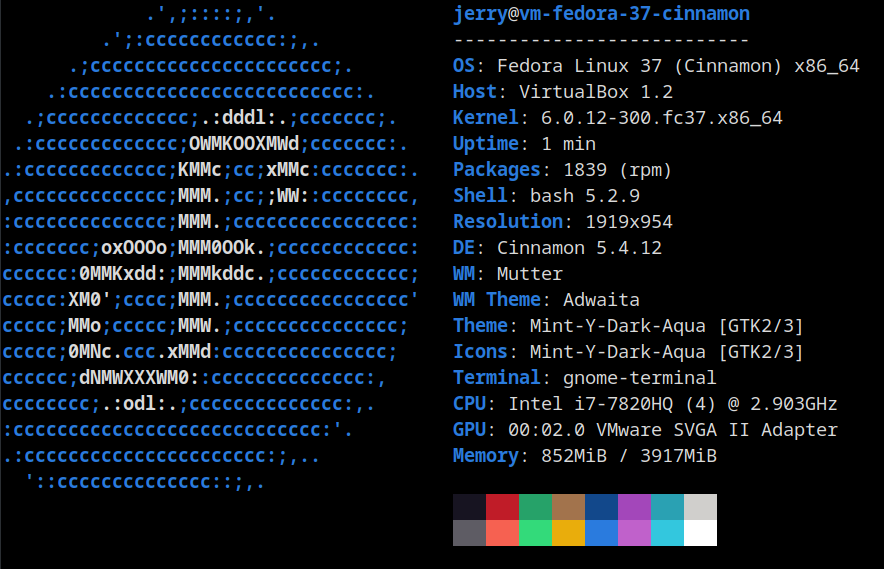Fedora 37 Cinnamon - Observations

I've been using this distro for two days now, as a daily-driver, and it's been very pleasant to use. I'm attracted to Fedora and Fecora-based distros because typically they're small and fast. In this case, the Cinnamon DE was something I hadn't used for many years, so it was almost like seeing it for the first time. Creating eight virtual desktops was no problem, and I used two spacers to move them into the center of the bottom panel, where they were easy to see and access.
Cinnamon strikes me as something akin to MATE. It took me back years by its '90s look, but it was competent in every way. Its file manager was able to connect with my NAS with no problems, including with both smb and nfs protocols. I modified /etc/fstab to include my NAS shares, and after creating mount points in /mnt, I was able to mount those shares. I created symbolic links between the /mnt folders and my /home folder, so that clicking on those folders in my /home folder accessed the NAS shares that had been mounted.

There are few non-Solus distros that are this compliant. Everything I've mentioned so far was done without any errors, or other difficulties. I decided to configure this VM as a copy of my daily-driver laptop (its host) and use it for a couple days. I configured Thunderbird with two email accounts and connected it to two calendars. I installed Vivaldi using an .RPM file from the Vivaldi.com web site. Next, I installed the three solitaire games I play from the repository, using dnf. I did an update using dnf, and installed restic, my backup utility.
With the idea that I might keep this VM available for a while, I created a restic backup repository for it on my Bakups/Linux share, and did a backup of it in its newly configured state.
SUMMARY
This is one of only a few VMs that I've kept beyond a short examination, because it's one that I've enjoyed working with, and has given me virtually no problems at all. I look forward to updating it each week and using it occasionally as I have done for the past two days. I recommend it for anyone who would like to experience a small, responsive system. Using less than 10 GB of a 32 GB drive, fully loaded and configured, is impressive.

Fedors 37 loads and enables 67 unit files at startup, which puts it on the low side of medium for the distros I've created. Startup and shutdown take noticeably longer than they do for Solus editions, but not dramatically so. I'll conclude with a neofetch image.
